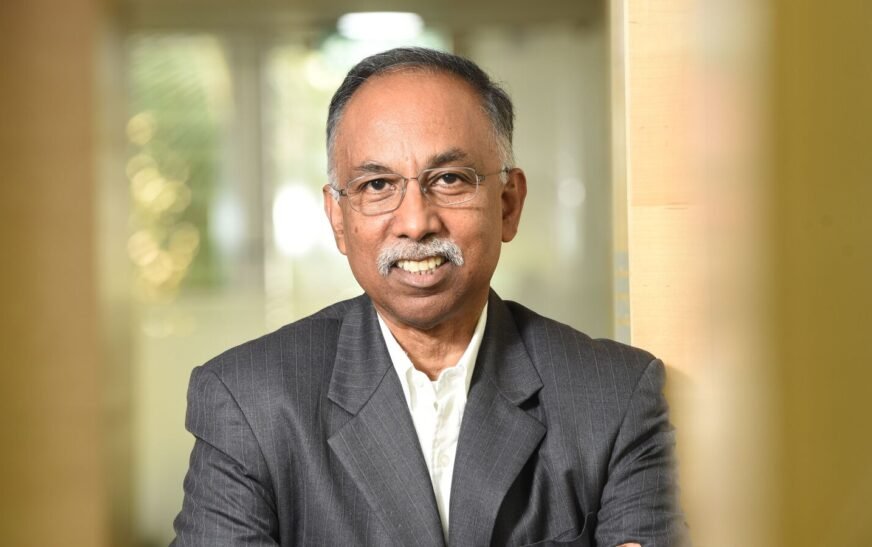SD Shibulal, one of the seven founding members of Infosys, now leads the Shibulal Family Philanthropic Initiatives, which has recently completed 25 years. Shibulal is also the patron of a non profit called Mantra4Change, which has recently launched Shikshagraha, a people’s movement focused on transforming government schools across India by collaborating with district leaders, women, and youth.
Shibulal, who stepped down from the post of CEO and MD at Infosys in July 2014, spoke with Mint about his philanthropic journey. For decades, 69-year-old Shibulal has worked on various areas in education, health care, to name a few. Edited excerpt from the interview:
Q- You are somebody whose name still resonates with the IT world. Do you see the world changing with this IT advancement?
Technology has become a big part of our life. There is no activity in our life where technology is not involved. Whether it is healthcare, it is retail, whether it is manufacturing, whether it is travel, any part, any activity in the human life, today technology is involved.
And I believe that will continue to happen. New technology will emerge. New forms of technology will emerge. Some of it will enhance our productivity. Some will enhance our convenience. will enhance and some will help. So, I see technology continue to play a very big part in our life.
Q- Your family started philanthropy back in 1999 in Kerala with the first scholarship scheme. What was the driving force behind this initiative?
So, by the way, to just add to the previous question, even in philanthropy, technology has a big path to play. Most of the things we do in philanthropy, we use technology heavily, it is used in the scholarship program, we use technology heavily in these philanthropic activities also.
Now, talking about the scholarship program. Me and my wife Kumari Shibulal had been thinking about thought about it forever. There are many areas one can get involved in and in a country like India, there are challenges in almost all areas.
Enrolment ratio in schools
If you look at our gross enrolment ratio in schools, we have done well, we have reached probably 80 per cent enrolment ratio in middle school. But if you look at our enrolment ratio in higher education, it drops down to – somewhere around that time with this was 25 years back – close to 20 to 22 per cent.
Now, if you compare that number with any other developed nation or even developing nation, it is below the limit. So that led us to believe that higher education is an area where we can create a difference. We decided to start the scholarship program for higher education.
Q- How did it go?
As of this year, we would have completed 50,000 scholarships. With 90,000 applications getting selected 3,000 people, finally it all comes down to merit We have thousands of children who have completed, gone on to doing various things. We have people who are doing PhD abroad. We have people who are employed in various corporations in India.
Q- One of the flagship program that you run is called Shikshagraha. Please elaborate
Through the journey from 1999 to 2012, we came to understand various facets of our education system and various challenges. In 2017, we started ShikshaLokam , which focused on leadership, creating capacity and leadership for care to work.
India today has about a million public schools, approximately 150 million children studying in them in the country India, right. Our secondary school drop rate is very high, about 12 to 13 percent even today.
ShikshaLokam introduced the concept of micro improvement. We figured out that as an organisation, we needed partners. So, the concept of collective action was created. transforming the schools by building capacity and leadership, driving chains through micro improvements and collective action.
And Shikshagraha is in a sense the culmination of all of this into the next level. Right? creating a network, creating a movement which will execute these philosophies, these methods in across the country in chosen districts.
Q- How does it work?
Shikshagraha will partner with local NGOs, people who work in those districts, who understand the district, understands the leadership, understands the government’s priorities, who understands the environment.
The parents, the students, the teachers, headmasters, DEOs, will partner with them. With all the knowledge, the methodology, the work with them on how to improve schools, right.
And jointly create transformation in the district. If we can do this across the country, it will be a phenomenal change.
Q- What are some of the success stories of this initiative?
Punjab is a good example. When we started working with Punjab, Punjab was rated one of the lowest in the National Achievement Survey and Performance Grading Index, though I may not be using the terms exactly correctly.
If we can do this across the country, it will be a phenomenal change.
We have jointly worked in Punjab with local organisations and the Punjab government. In the last couple of years, they are rated number one in the index. So, very good example to consider.
Punjab was basically witnessing drop in enrolment. Through the initiative, we were able to reverse the drop in enrolment. But during the period in which we were working there, we were able to reverse the drop in enrolment.
Catch all theBusiness News,Education News,Breaking NewsEvents andLatest News Updates on Live Mint. Download TheMint News App to get Daily Market Updates
MoreLess





